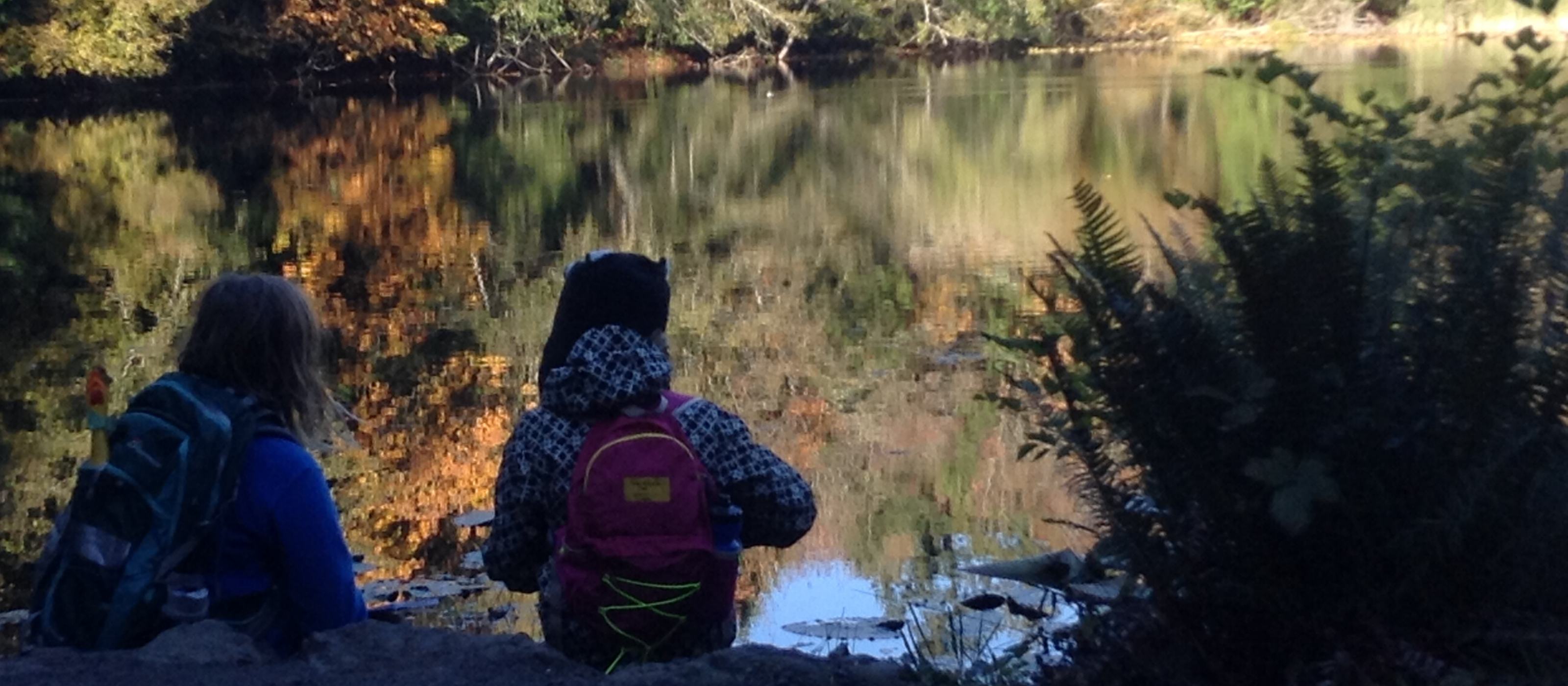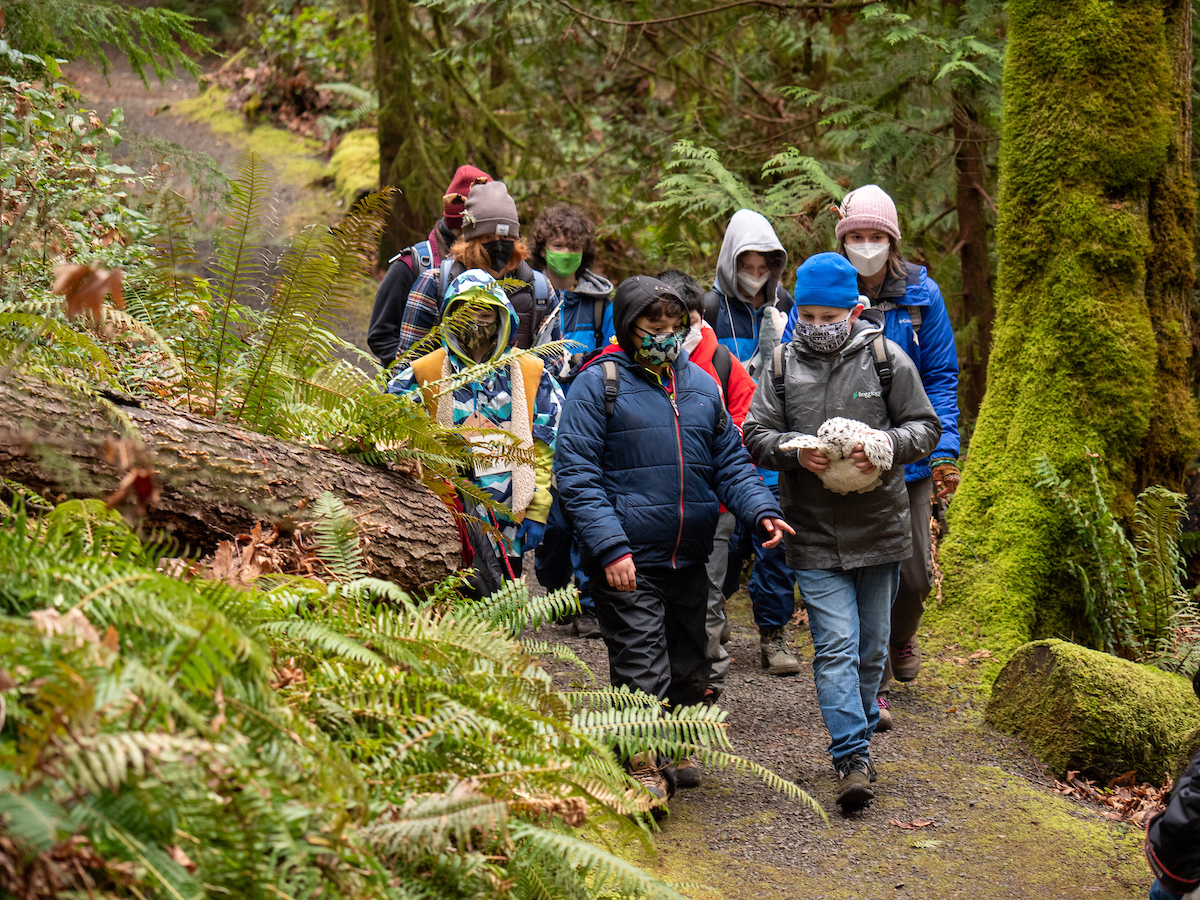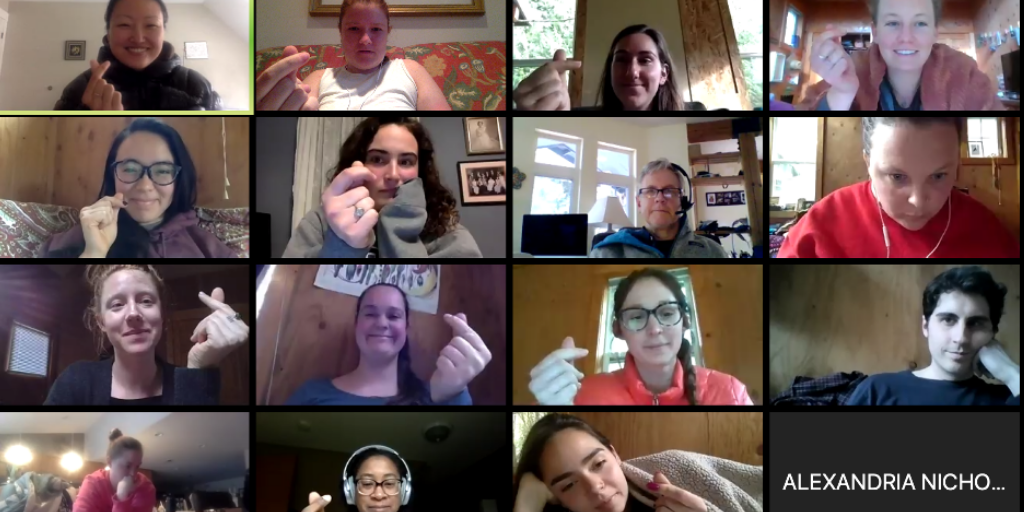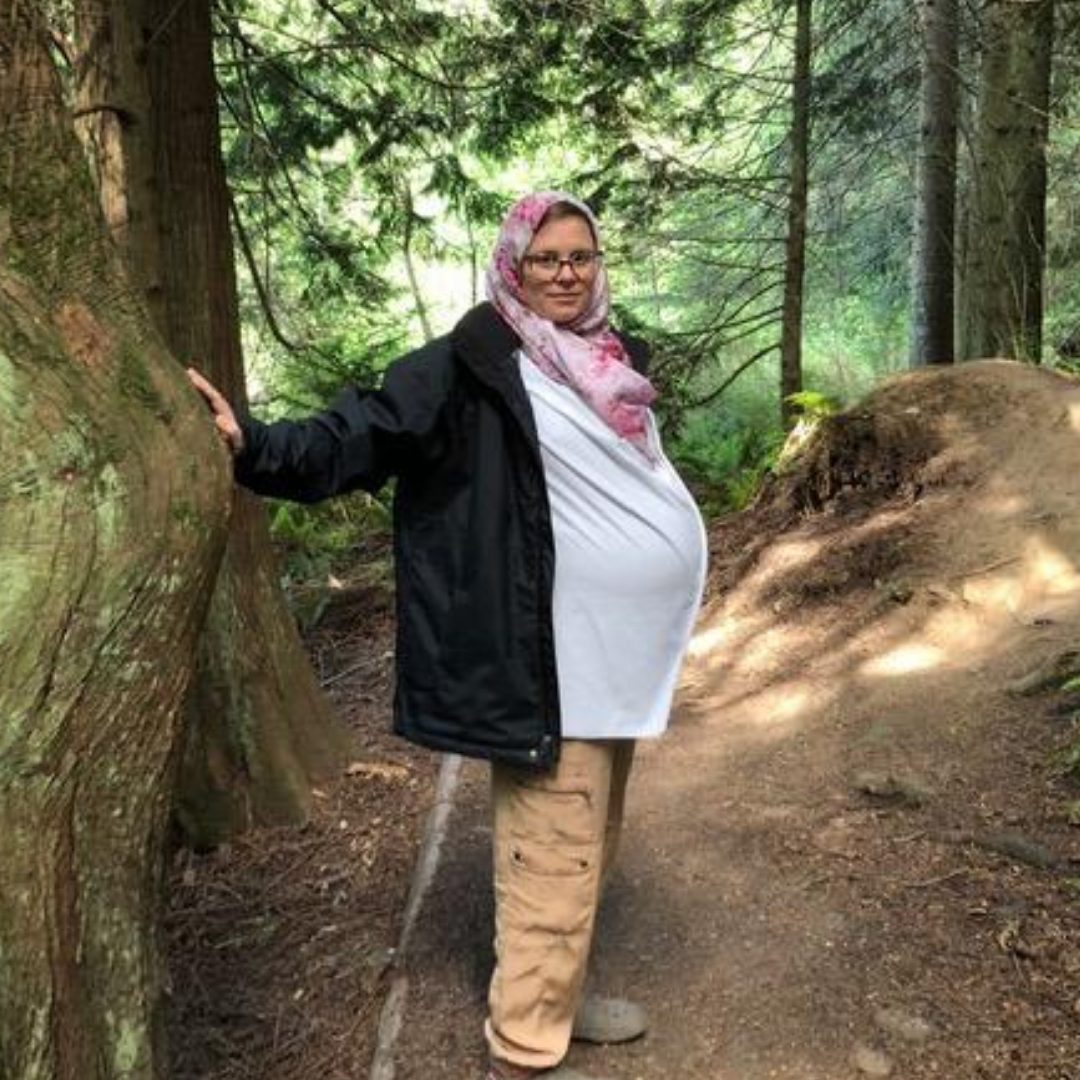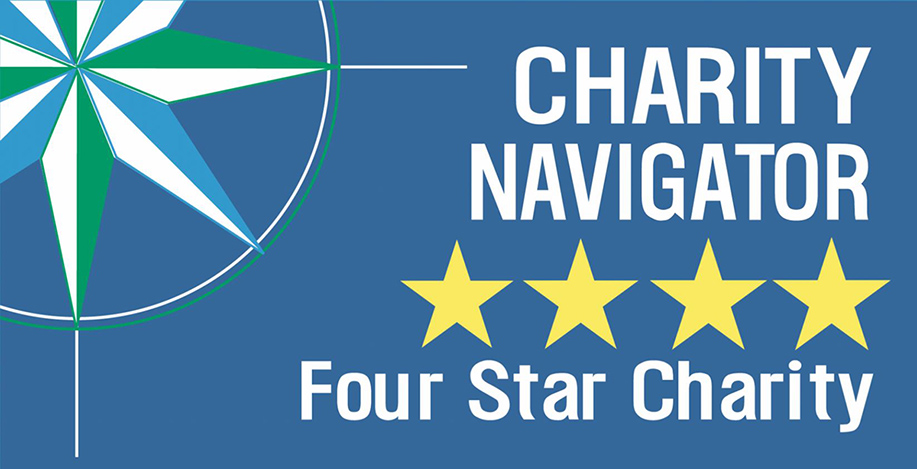IslandWood graduate students were featured in this recent Seattle Times article about House Bill 2078
Author: Benay O’Connell
“Gently close your eyes and take in a nice deep breath. Do this several times and allow your body to relax more and more with each deep breath.”

IslandWood graduate student Benay O’Connell.
Twelve 5th graders in the School Overnight Program stretch out on pillows in a wooden loft as I guide them through a mindfulness meditation. They are exhausted, both physically and mentally, from a long hike down and back from Blakely Harbor.
For the first time that fall day, the only sound I can hear is the steady drip of light rain on the roof.
I’ve read the literature lauding mindfulness meditation’s myriad benefits, including many benefits for children. Mindfulness has been shown to be beneficial to some in easing symptoms of ADHD, chronic pain, anxiety, depression, and stress. It also has the potential to enhance children’s attention and focus, and improve memory, self-acceptance, self-management skills, and self-understanding (Hooker & Fodor, 2008). I’ve felt some of these effects of meditation myself, and I was curious to try incorporate mindfulness meditation into my work with students as part of my graduate program practicum.
Back in the cozy loft, I start reading an “enchanted fall forest” meditation. I often choose guided meditations with a natural, place-based theme that relate to our field day.
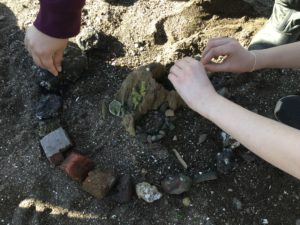
Students create a circle of stone in the sand at Blakely Harbor.
This helps connect our day of tromping through the gold, orange, and red of a fall day at IslandWood to a special, calming experience. I remind them that they can return to this place in their mind at any time when they are feeling stressed or anxious.
After the meditation, I give students the opportunity to take several minutes to take deep breaths, relax, and reflect on the day. Even groups that at other times in the week have been very energetic, silly, and loud (which are all great things throughout the field day!) are able to wind down and take some quiet time for themselves.
I ask students how they feel. Though one or two students per group shrug or say something like “okay,” nearly every other student says something like, “I feel so calm,” or “I feel really good!”
After talking with other IslandWood graduate students about my experiences using mindfulness meditation with my field groups, some were curious to try it out as well. When I ask them how this tool worked for them, they reported similar findings, with the majority of their students expressing feelings of peacefulness and calm.
There are other mindful experiences that I incorporate into my practice with students, including solo experiences like solo sits and solo hikes. Mindfulness experiences like these allow students have time alone to reflect: to think, draw, write, or walk.
Students often cite these experiences as some of their favorite aspects of the week, and they are often mine as well.
Source Cited
Karen E. Hooker, Psy.D., & Iris E. Fodor, Ph.D. (2008). Teaching Mindfulness to Children. Gestalt Review, 12(1), 75-91. Retrieved from www.jstor.org/stable/10.5325/gestaltreview.12.1.0075

